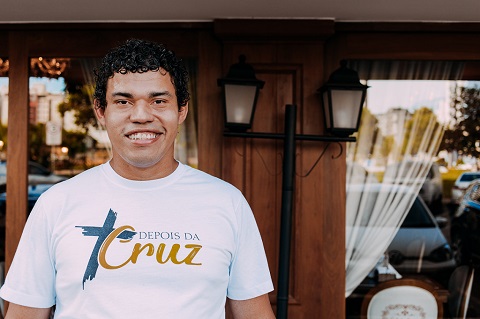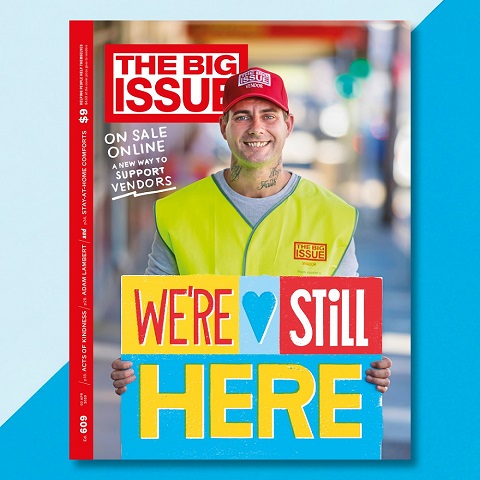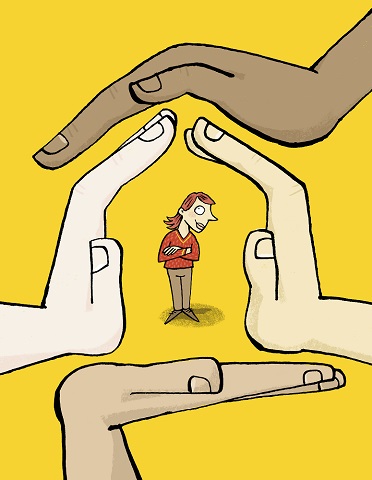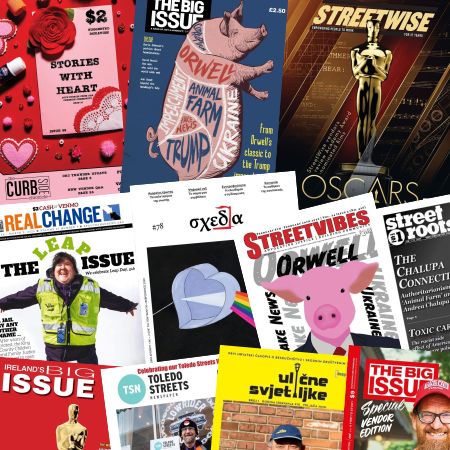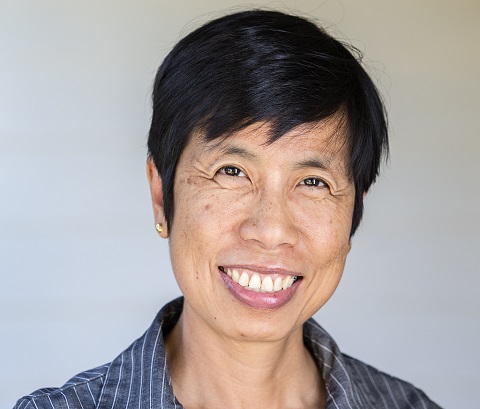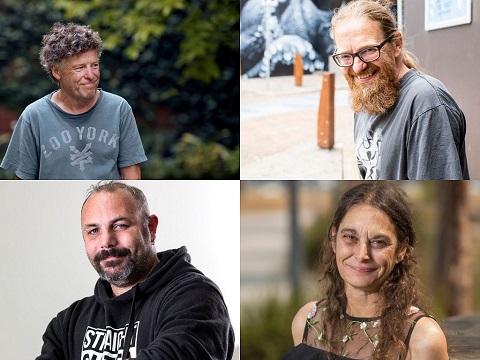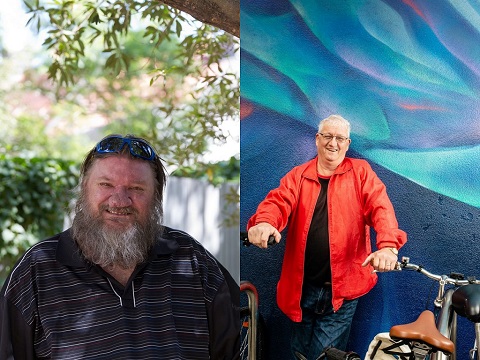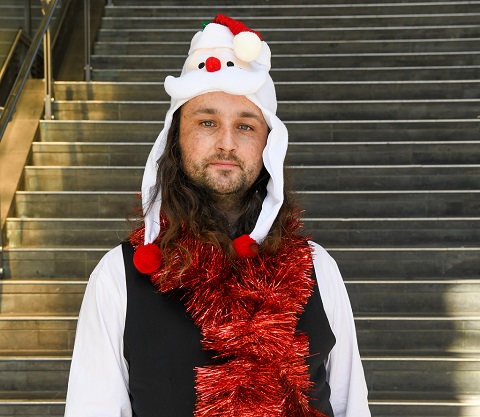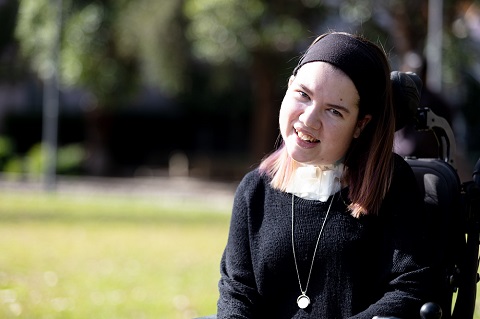By Sophie Quick, The Big Issue Australia
Seven years ago, Tiffany had an encounter with a police officer on the streets of Salt Lake City. She was looking worse for wear – to put it mildly – and the officer was blunt. “You can’t just walk around looking like that anymore,” he told her. “You’re either going to hospital or you’re going to jail.”
By then, Tiffany had been on the streets for about six years. She was living in and out of motels, shooting up every day and – in her words – “doing whatever I had to do to make my money”. Looking back on herself as she was then, Tiffany paints a picture of a walking human catastrophe. “My arms were covered in abscesses but I kept shooting up anyway,” she says. She had endocarditis – infected heart valves – and a staph infection. “Plus, I’d been walking around for two-and-a-half months with three slipped discs in my neck.”

The police officer was right: the homeless often end up in jail or an emergency department. This is especially true in the United States, but it’s a reality in many countries worldwide. This cycle not only has a devastating toll on those in its thrall, it translates to a considerable burden on the health system, the justice system and the corrections system.
But in Salt Lake City, authorities have lessened this expense – and provided shelter to many homeless people – through their Housing First programme.
Tiffany is one of those who has benefited. She now lives at Grace Mary Manor, a building in suburban Salt Lake City, and she’s been there for five years.
I chatted with Tiffany at the kitchen table of the small, one-bedroom studio apartment she shares with her cat, Baby. Tiffany’s double bed was crowded with stuffed toys and above her dressing table was a professional photo of her three children – two girls and a boy – hamming it up for the camera in gangster costumes. Tiffany’s children live with her mother, but she now gets to see them regularly. “I have a big bed, so they can sleep over whenever they want,” she says.
Tiffany did go to hospital soon after meeting that police officer all those years ago, spending several months there recovering from her myriad medical problems. Soon after she was discharged, she moved into Grace Mary Manor. And since her move into secure housing, her addiction has been under control. “I’m still on methadone,” she says. “But I’ve been clean since then.”
The principle behind Housing First is simple – get people who are homeless straight into homes.
In most of the US, a person must show they are ‘housing ready’ before they can get permanent housing. Usually they will transition through temporary housing, with the hope of qualifying for something permanent. Often they will have to complete programmes in order to qualify for permanent housing – drug or alcohol rehab or job training, for example. In Salt Lake City they do it the other way around: first a house, then tackle addiction, mental health problems, unemployment or other issues.
Liz Bioteau, resident services manager at Salt Lake City Housing Authority, says the idea of Housing First, which has been running for more than 10 years, is to lower all barriers to housing. “At no point in qualifying for eligibility for Grace Mary Manor do you have to jump through hoops. You don’t need to be sober for 30 days; you don’t need to have a job.”

There are 84 people now living at Grace Mary Manor, all of whom – like Tiffany – used to be chronically homeless. All the apartments are small single-occupant studios with their own cooking facilities and bathrooms. There’s a gym and a library. There’s even a games room where, Tiffany tells me, she’s regularly thrashed at pool by other residents and her own children.
The set-up is described as “permanent supported housing”, which means there are staff on-site 24 hours a day, seven days a week. And security is tight.
All this suits Tiffany. “I do well in structure, always have,” she says. There are employment services and access to drug and alcohol counselling on the premises. Caseworkers help residents deal with social security and mobile phone companies, for example.
The concept of Housing First sounds either bleeding obvious or bleeding heart, depending on your perspective. It also sounds expensive – the kind of big-government solution for which there’s an almost pathological distaste in parts of America. But is it working? And how did this happen in conservative Utah?
The answer to the first question is yes, it’s working phenomenally well – at least, according to the State of Utah. In 2015, the state announced it had cut chronic homelessness by 91 per cent since 2005. The Washington Post ran with the headline, ‘The surprisingly simple way Utah solved chronic homelessness and saved millions’.
Much of the programme’s success is due to one man, Lloyd Pendleton. He’s the director of Utah’s Homeless Task Force and was previously the Mormons’ director of humanitarian services. Being so well connected, Pendleton has been able to champion the effort and bring the people of Utah along with him.
Bioteau told me that a big part of Pendelton’s success was making a cost-efficiency argument, rather than a moral one. “What he did was he reframed the conversation from one of social justice perspective more towards the dollars saved ultimately to our community. We’ve been able to show in Utah that it’s cheaper. It’s cheaper to house this population than keep them on the streets.”
Bioteau’s colleague, Zachary Bale, suggests it might be because the aversion to government spending is so entrenched in Utah that the programme has received so much support. “There was good, strong evidence of cost savings and that feeling is so strong here – that whatever the most cost-efficient thing to do is, we should do it.”
The state estimates that every chronically homeless person housed through the programme equals US$8000 net cost savings a year, enabling local services to serve an additional 2.4 temporarily homeless individuals through other programmes.

The problem of housing affordability, and of poverty generally, is as complex in Salt Lake City as elsewhere. Housing First isn’t the only low-income housing programme in Utah. The programme doesn’t help the largest proportion of people who are homeless – the temporarily homeless – and it doesn’t help those who are at risk of becoming homeless. One of the reasons the programme has been so successful in helping the chronically homeless, and so quantifiable, is that it’s highly targeted – to people who have been homeless for one year continuously or who have experienced four episodes of homelessness in three years.
There are stories of new Housing First residents struggling to adjust to living indoors – people who at first chose to sleep on the floor, rather than in bed. There are people who are very sick or struggling with addiction. Ensuring residents can continue to stay housed is the ongoing business of Bioteau and her team. “If we’re having a problem with a resident not following [the rules of the building] or who is struggling in some other way, we try to sit down as a team and say ‘What can we do to work with this person?'” Bioteau says.
Residents at Grace Mary Manor aren’t treated like babies. They can smoke and drink in their apartment; they just can’t break the law. And Tiffany says, for the most part, it works. Though like any form of housing, there are downsides. “People are nosey,” she says, “there’s fights sometimes.”
But the upsides outweigh the downsides. Tiffany’s prior life was chaotic; she now thrives on routine. “My grandma’s on dialysis on Tuesdays and Thursdays,” she tells me. “The train and bus are pretty close, so every week I go and get my methadone dose and then go and sit with her while she does dialysis.”
And it’s no accident that Tiffany has been able to stay clean since landing stable housing. “Because when you live on the streets, the main stress is that you don’t have a place to go.” Day-to-day stress of that magnitude – especially in a city cold enough to have hosted the Winter Olympics – is not exactly conducive to overcoming a drug problem. That experience is not one Tiffany cares to relive anytime soon. After six years on the streets, home is not something she takes for granted. “Every time winter comes, I am so happy I have a roof over my head,” Tiffany says, looking up at the ceiling. “God, it’s such a relief.”
Courtesy of The Big Issue Australia.





